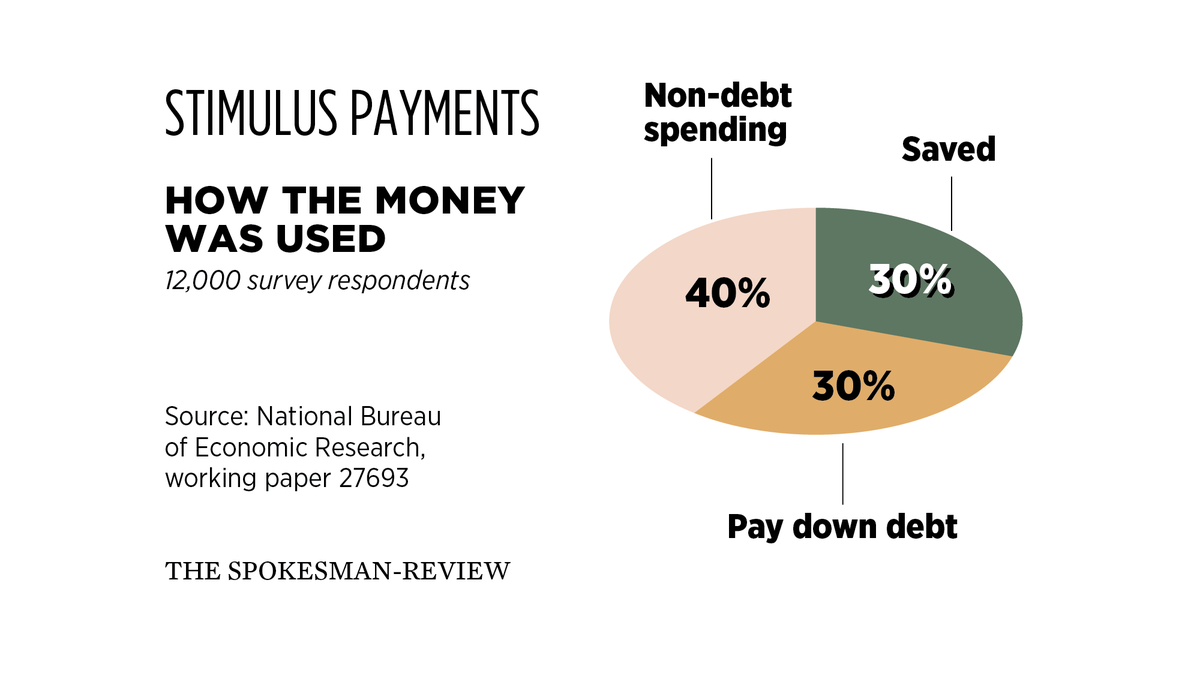Spokane economists: Regional recovery will depend on vaccine, stimulus

As the region slowly rebounds from the economic impact of the coronavirus pandemic that caused businesses to temporarily close and companies cut jobs, local economists on Tuesday said a COVID-19 vaccine or second federal stimulus package will be the key to a full economic recovery.
“The reality is, that globally, we are trapped by COVID-19. It’s a global problem. It’s a regional problem,” said Grant Forsyth, chief economist for Avista Corp. “But the general consensus among economists is that we’re not going to escape this trap until we have an effective vaccine that people are willing to take.”
Forsyth told attendees at the Greater Spokane Incorporated’s annual economic forecast event that job recovery won’t likely occur quickly without a vaccine.
“The second thing that would really be very helpful at this point is we really, probably, need a second stimulus and we need Congress to agree to that and move forward with that,” he said.
Forsyth predicts a zero to 2% increase in regional employment growth in 2021 if a vaccine or a second federal stimulus package isn’t approved.
But, one or the other becomes available, the region is likely to see 2-3% employment growth. Those percentages would increase if both a vaccine and a new stimulus package get done.
In April, Spokane and Kootenai counties combined saw a 16% decline in nonfarm employment from pre-pandemic levels since February, marking the biggest employment drop in a decade.
By September, Spokane and Kootenai counties had recovered some jobs, but employment growth was still down by 7.5%, Forsyth said.
“So, we’re a long ways from recovering,” Forsyth said. “If we were to continue at the pace of the August-September growth rate, we wouldn’t recover our employment level regionally until about 2024.
“Again, in absence of the vaccine, we still need that stimulus to help push us forward, because the recovery is starting to slow.”
Nationally, there was a staggering loss of nearly 22 million jobs by April. In response to that decline, the Federal Reserve cut interest rates twice since March and its board launched the Money Market Mutual Fund Liquidity Facility to enhance functioning of money markets to support the economy, said John Mitchell, principal of M&H Economic Consultants.
The Fed also established the Main Street Lending program and the U.S. Treasury Department pushed for small business grants through the Small Business Administration’s Paycheck Protection Program, he said.
In August, the Fed adopted a policy shift to allow for periods of higher inflation above 2%, meaning interest rates could remain at record lows until 2023, Mitchell said.
He noted that Washington and Idaho saw rapid increases in personal income at 35.1% and 33.6%, respectively, during the second quarter.
Employment earnings declined, but transfer payments – in the form of unemployment and stimulus checks – soared.
Mitchell said that increase in personal income, in part, accelerated a rise in online shopping during COVID-19.
Cambridge, Massachusetts-based National Bureau of Economic Research, a nonpartisan think tank, conducted a study on how people spent their federal stimulus checks. More than 40% of the 12,000 respondents said they used the money for nondebt spending, while 30% of respondents used it to pay down debt and the remaining 30% put it in savings.
“So, really, what that means is I think the CARES Act probably worked pretty well in supporting consumption, preventing a debt crisis and also giving people a cushion going forward,” Forsyth said.
“I think, to some extent, this indicates those programs were actually pretty successful.”
Forsyth said small firms nationwide took the biggest hit in employment losses during the stay-home order in March and could likely be heavily impacted as a result of the state’s new restrictions that went into effect this week.
The region could see an uneven recovery based on worker pay and a rise in underemployed, or those workers who take part-time jobs instead of full-time employment, he said.
Because private firms make up 70% of the region’s employment, their recovery is vital to ensuring the area has a robust recovery, Forsyth said.